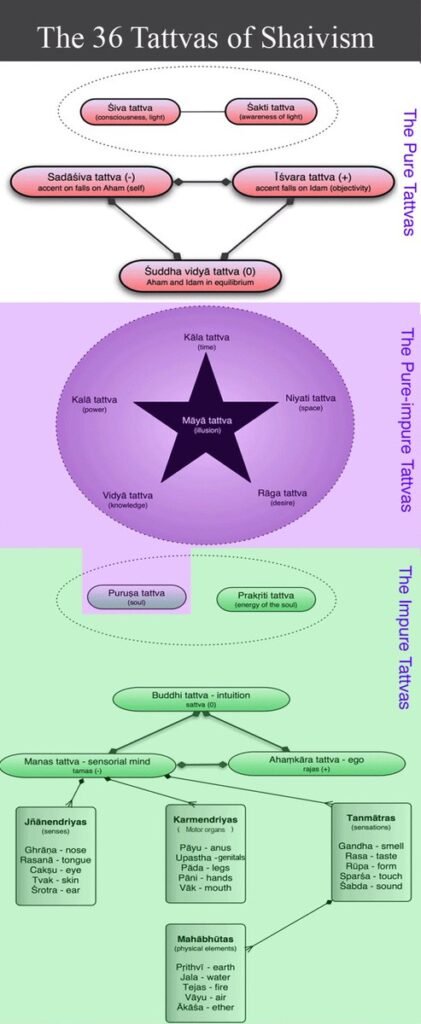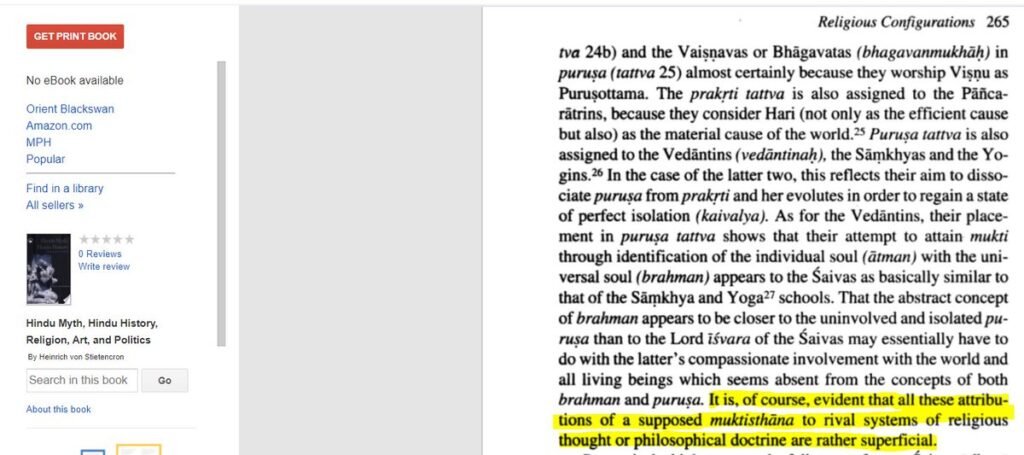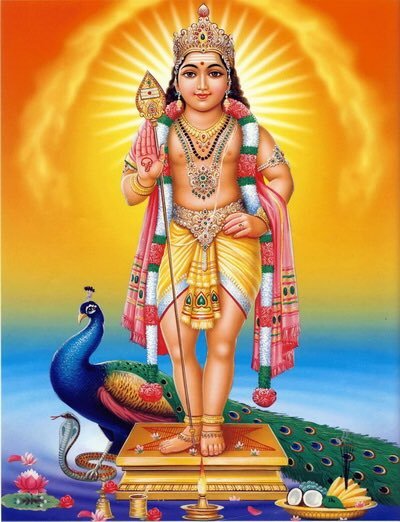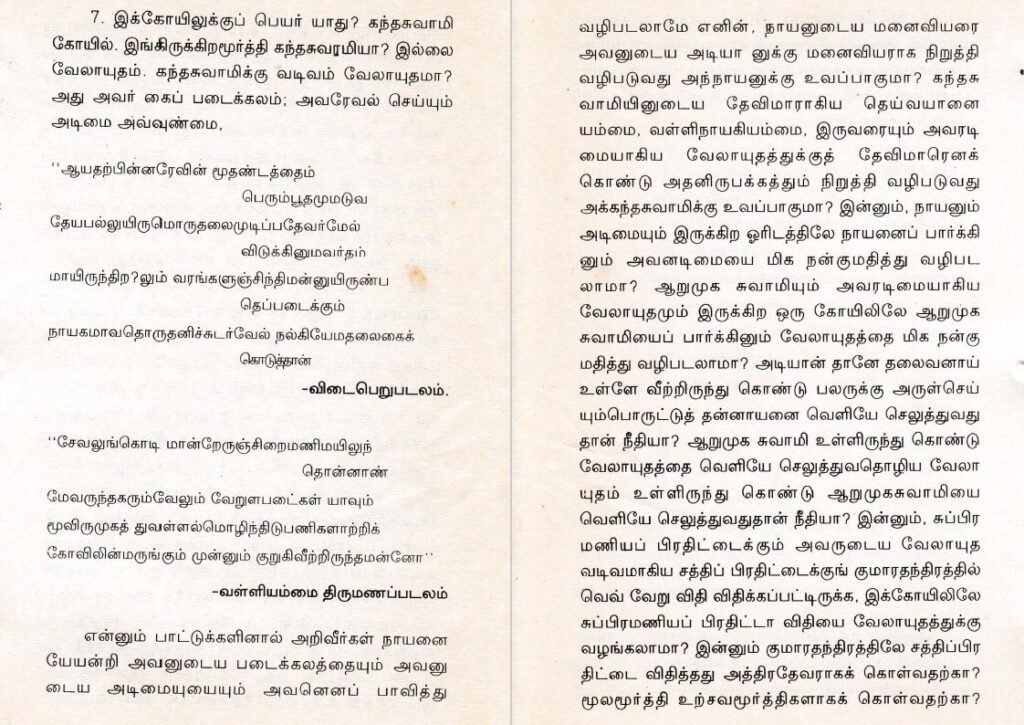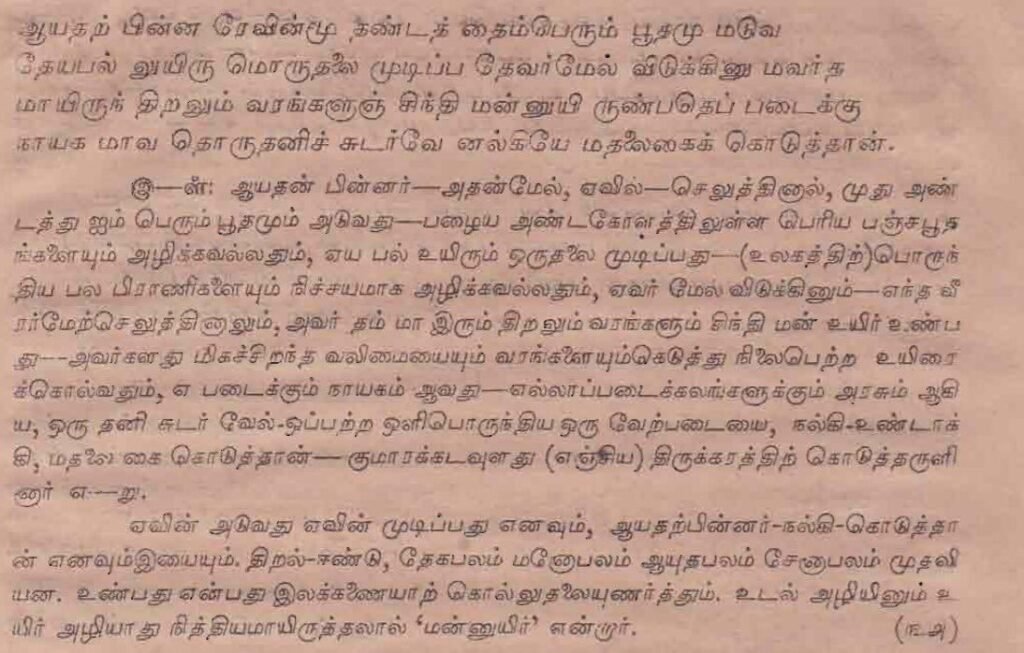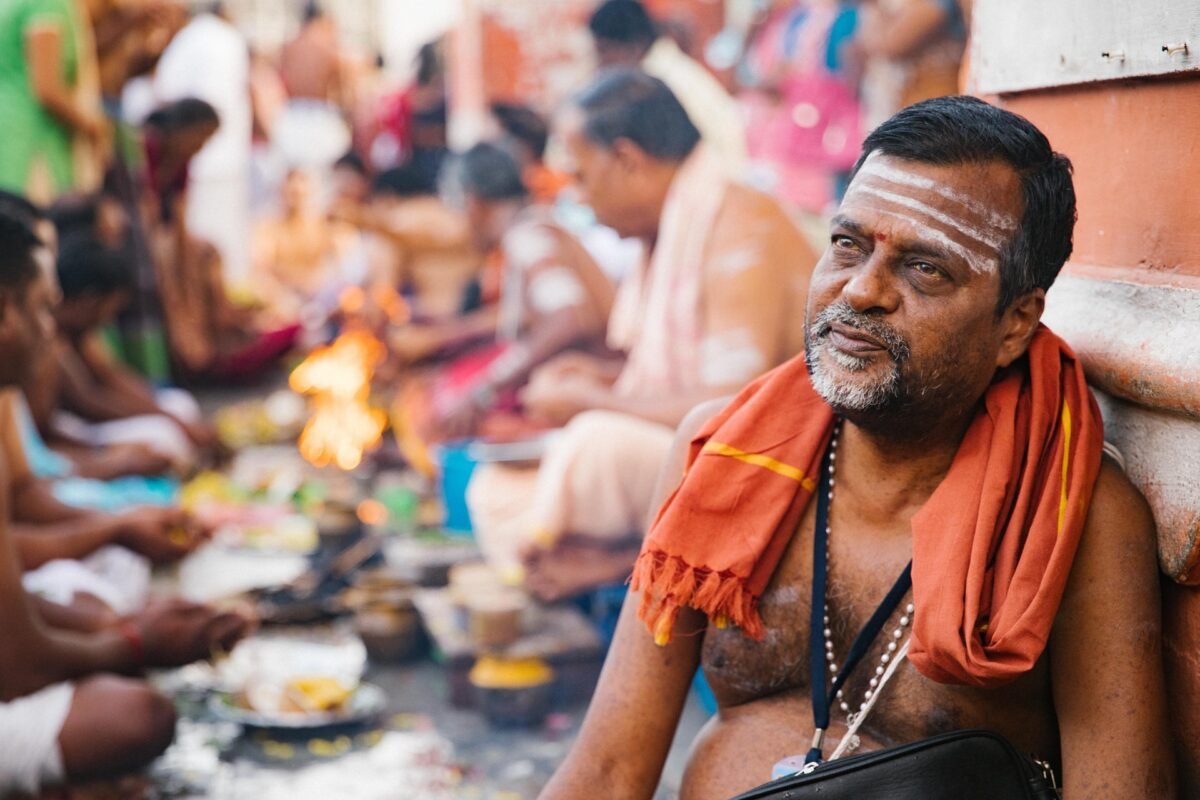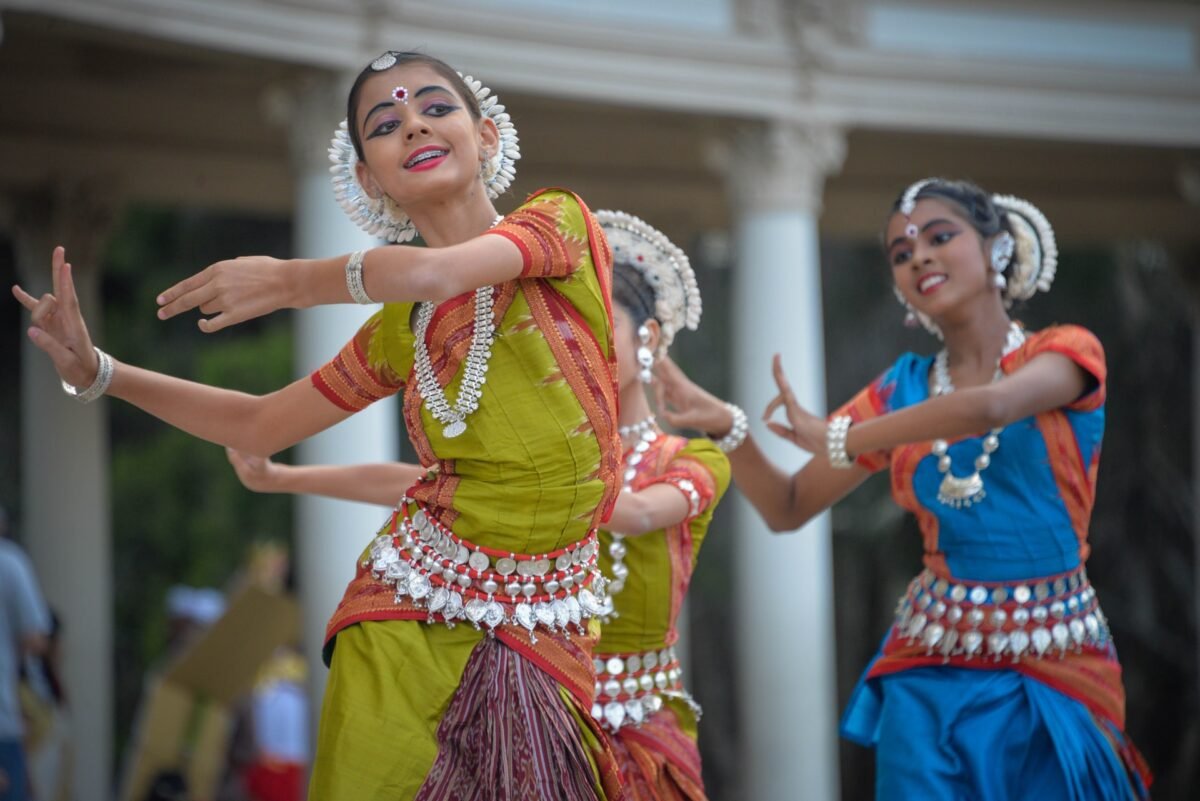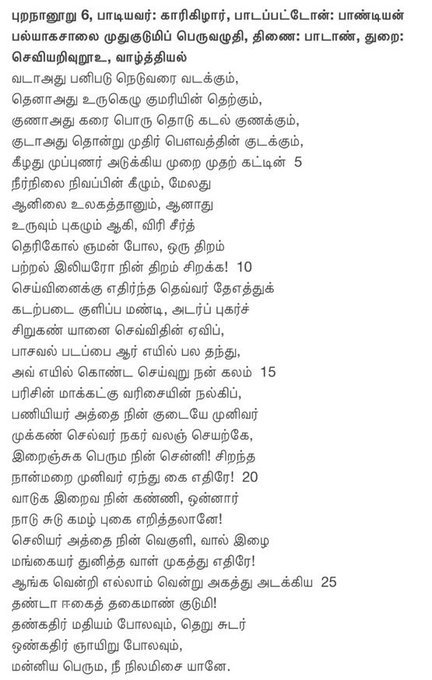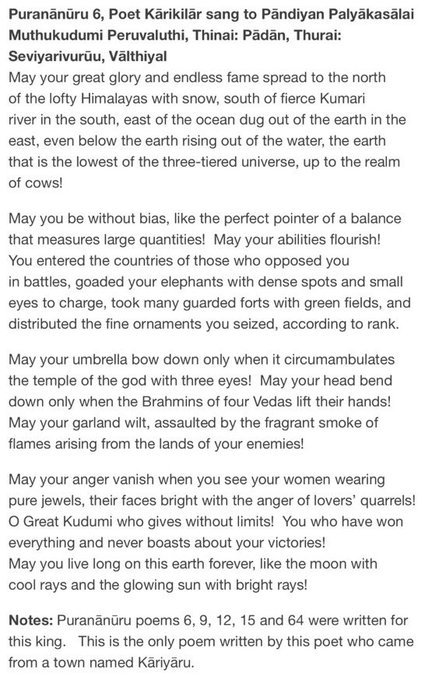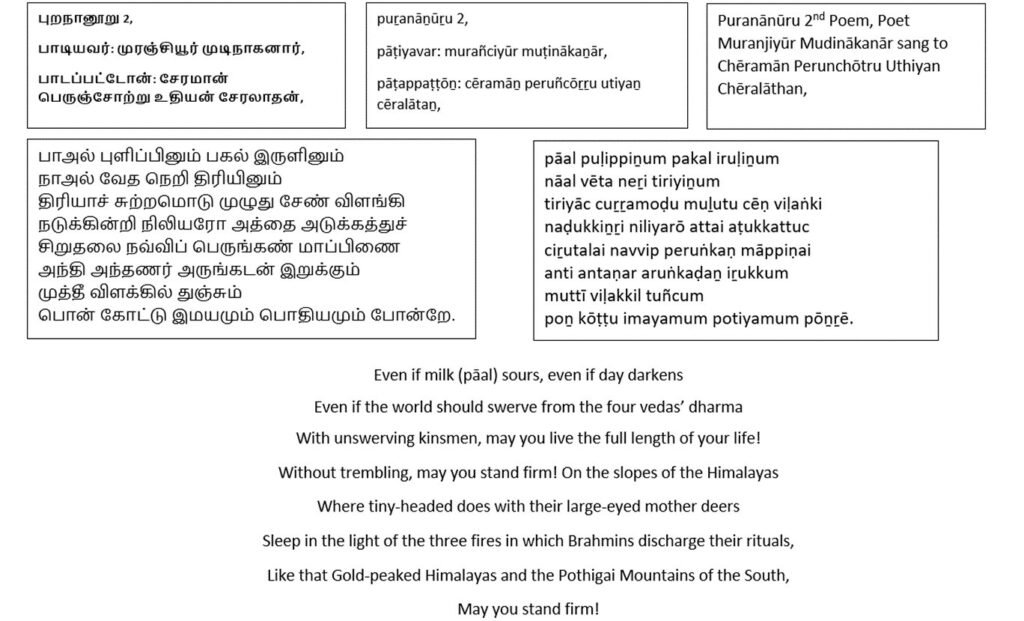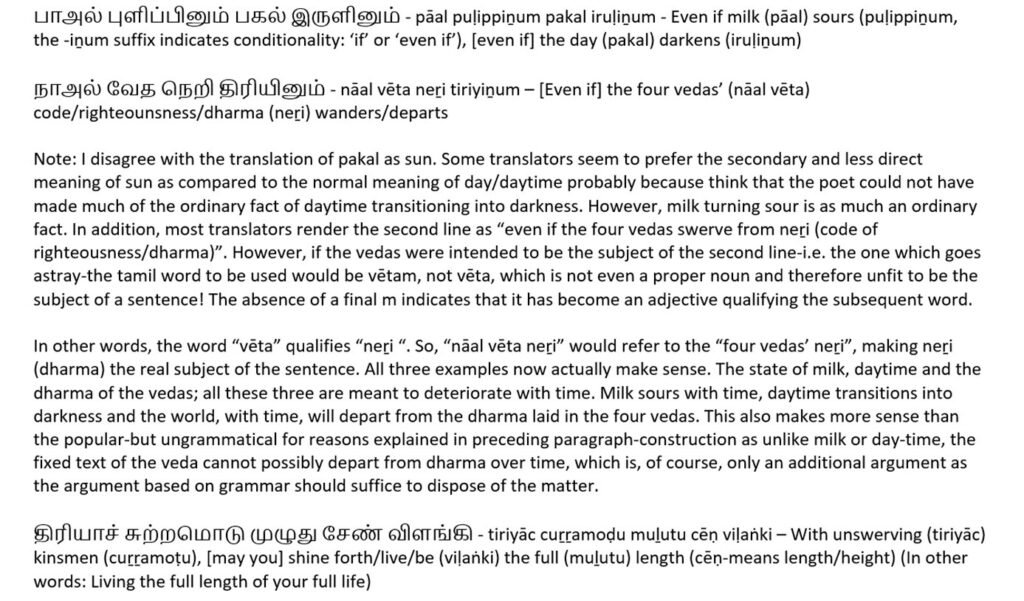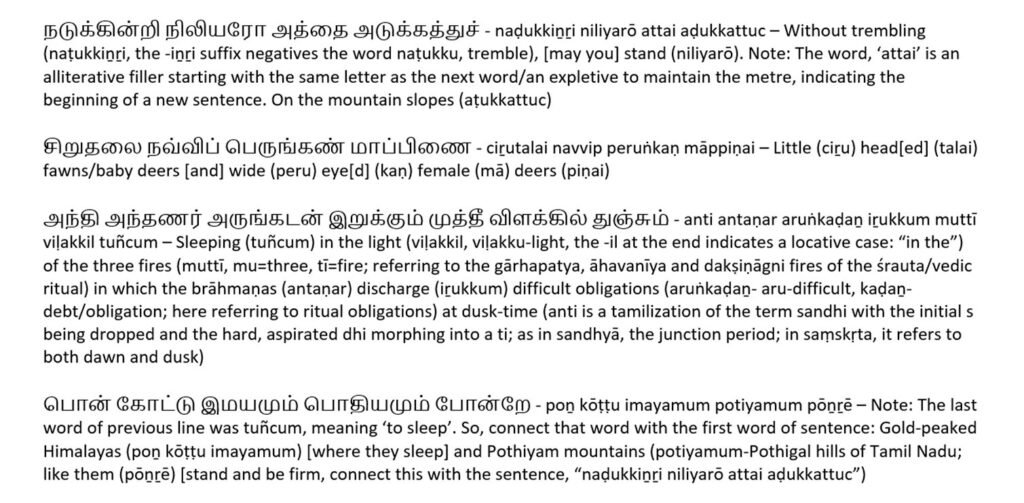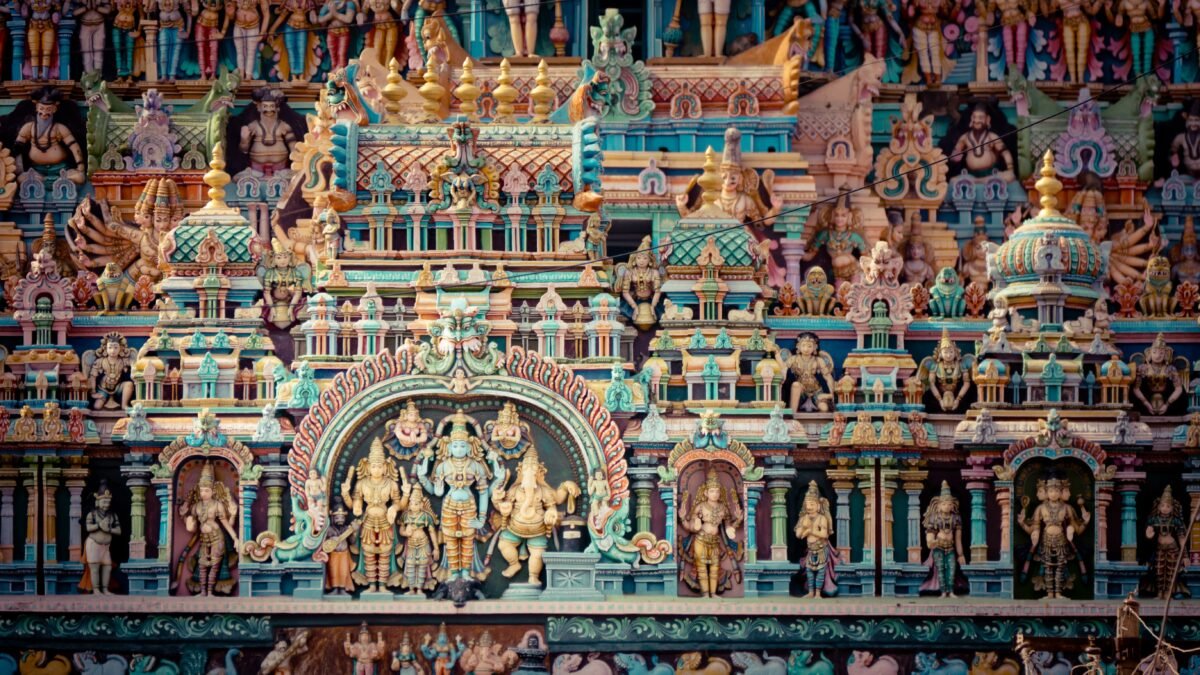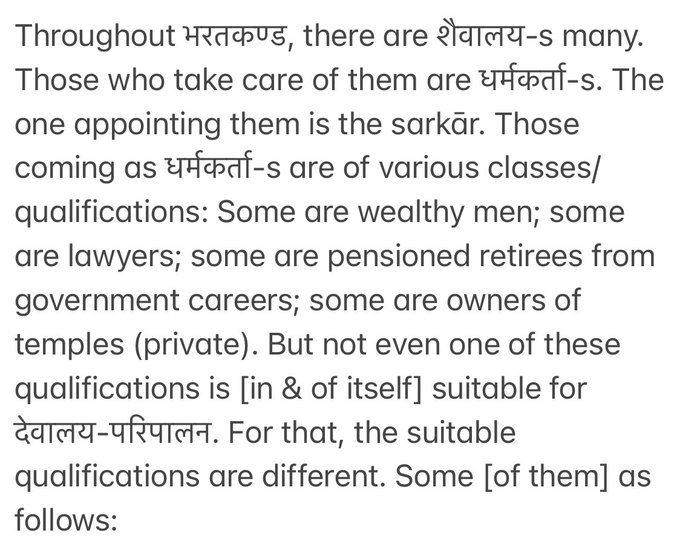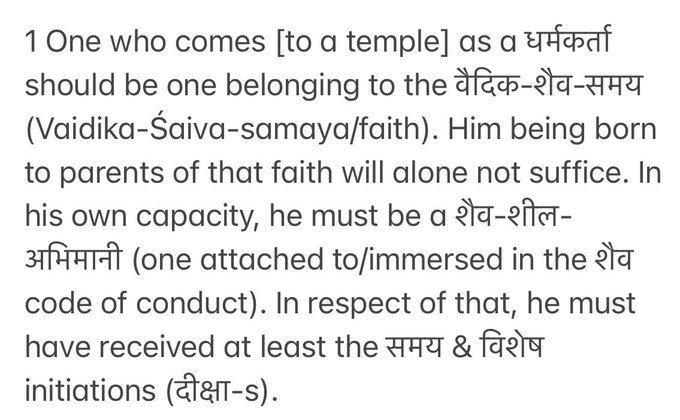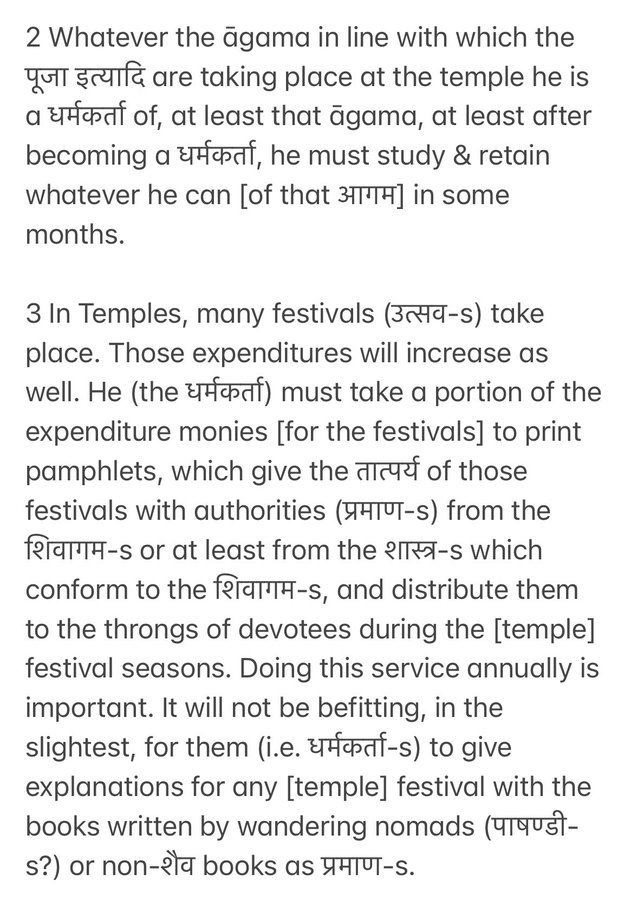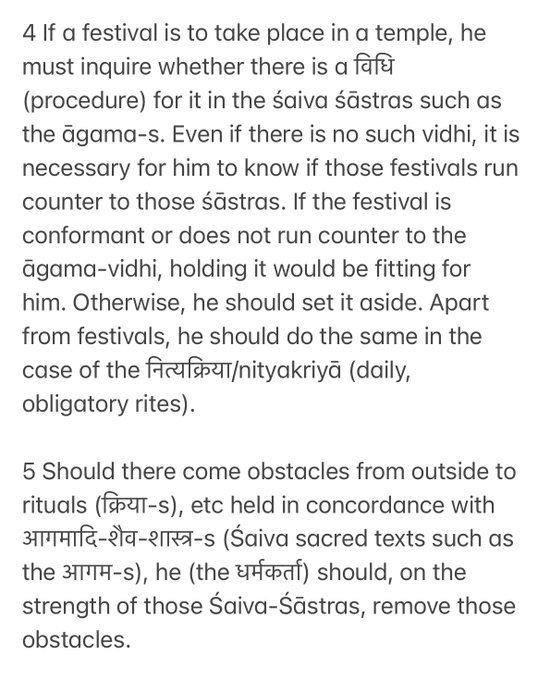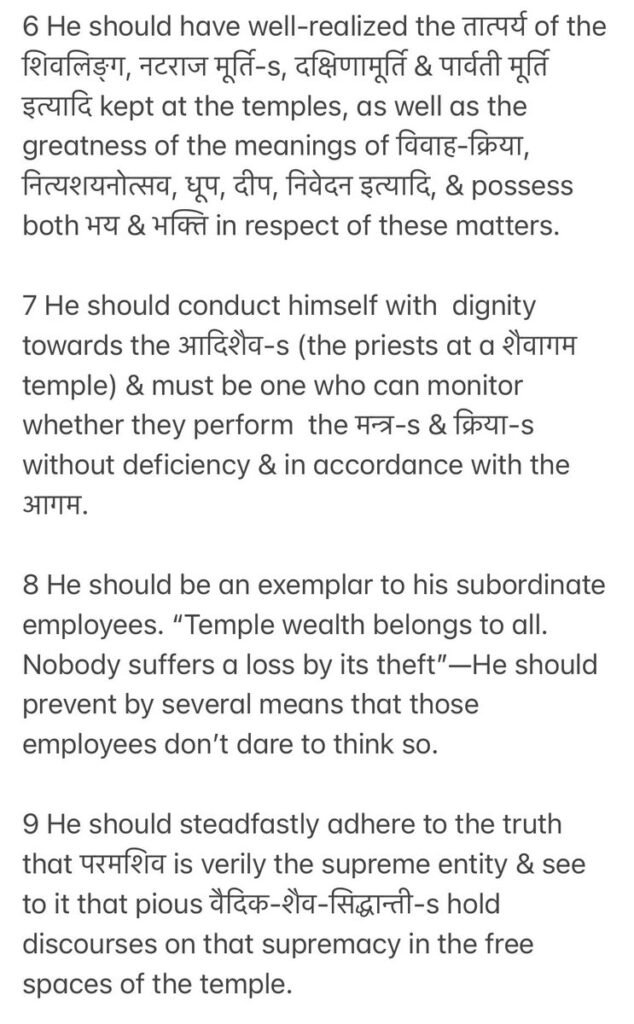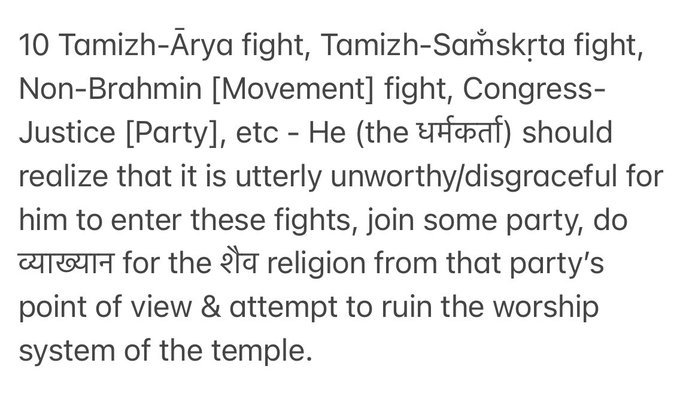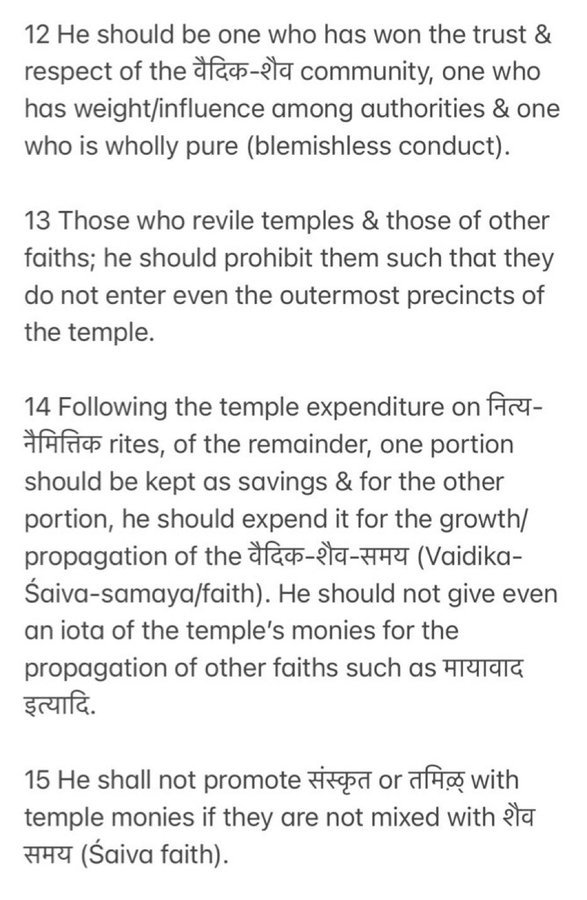யாராவது செல்வம் இல்லாததால் அவதிப்பட்டால், நான் அவருக்கு செல்வத்தை உருவாக்க உதவ முடியும், ஆனால் மற்றவர்களிடமிருந்து செல்வத்தை தீவிரமாகப் பெற்று, அதை மறுபகிர்வு செய்யவோ அல்லது அதையே ஒழிக்கவோ முயற்சிக்க முடியாது. அதேபோல், பாகுபாடு பிரச்சினைகளில் நாம் பணியாற்றலாம் & அனைத்து இந்துக்களும் சுயமரியாதையை அடைய உதவலாம், இதன் மூலம் பெருமைக்கான புதிய ஆதாரங்களை உருவாக்கலாம். ஆனால் அனைவரையும் பிராமணர்களாகவோ அல்லது வேறு ஏதாவது ஒன்றிலோ ஆக்குவது அதைத் தீர்க்காது. மற்ற அடையாளங்களுக்கு எந்த அர்த்தமும் இல்லை என்ற தவறான கருத்தை அது வலுப்படுத்தும்.
மக்கள் உண்மையில் அதை வைத்திருந்தால் அது மிகவும் வருந்தத்தக்க யோசனை. சிம்மபுரியில் உள்ள ஒரு கோவிலில் ஒரு நாகஸ்வரக் கலைஞரைப் பற்றி நான் அறிந்தேன், அவர் ராஜராஜ சோழ காலத்திற்கு முந்தைய தனது நாகஸ்வர குடும்ப வம்சாவளியைப் பற்றி மிகவும் பெருமைப்பட்டார். இன்று எத்தனை பிராமணர்கள் அத்தகைய நினைவாற்றலுடன் போட்டியிட முடியும்?
பல நூற்றாண்டுகள் பழமையான திருவிழாக்களில் பங்கேற்கும் மீனவர்கள் இன்றும் உள்ளனர்.
மக்கள் தங்கள் மூதாதையர் பாரம்பரியத்தை மீண்டும் கண்டறிய உதவுவது சாத்தியமாக இருக்கும்போது நாம் அதைச் செய்ய வேண்டும்.
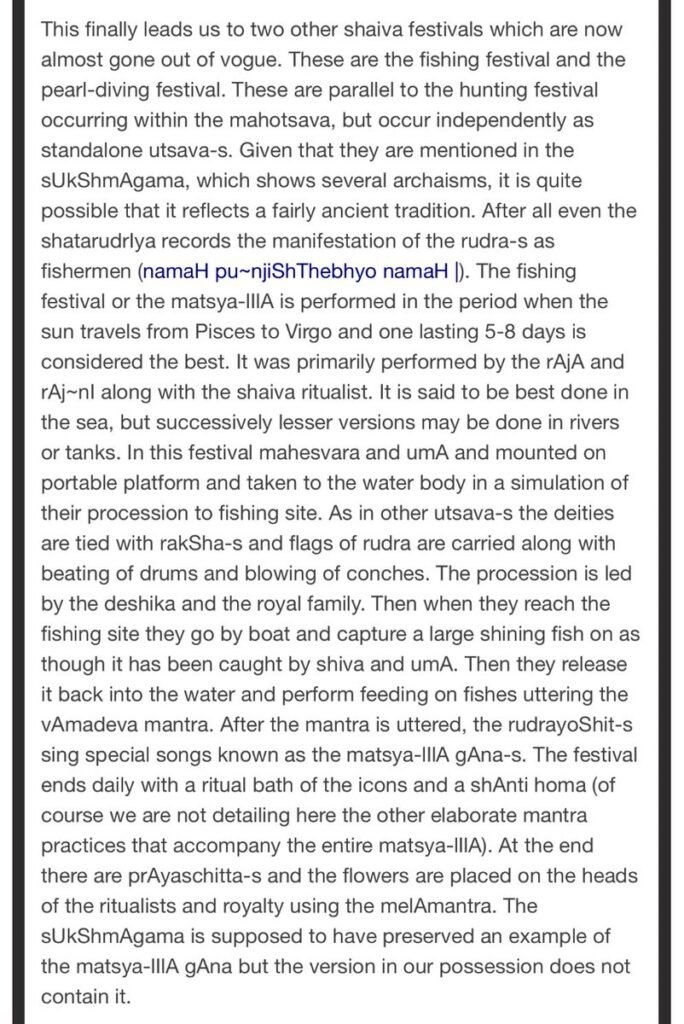
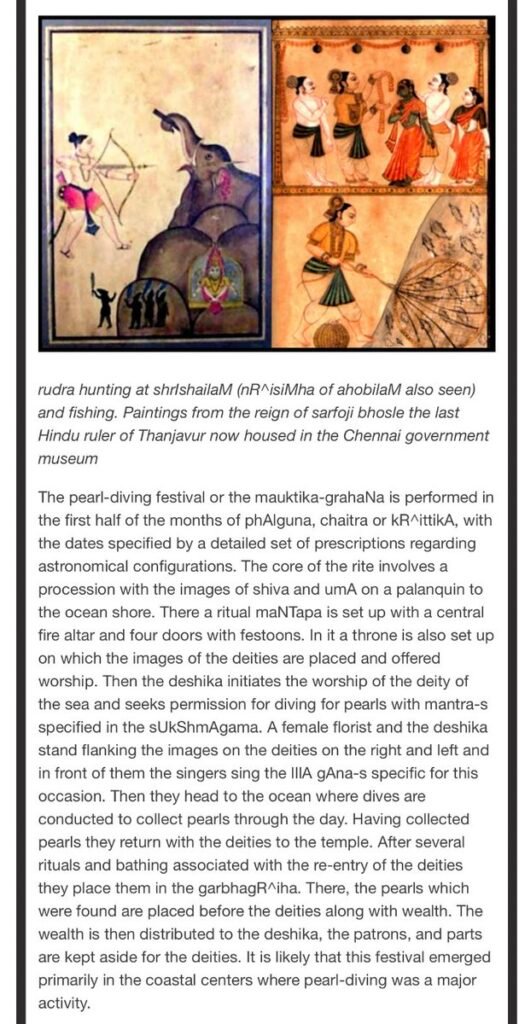
எல்லோரும் பிராமணர்களாக மாற்றப்பட்டால், உண்மையில் அதற்கு என்ன மதிப்பு இருக்கும்?
यदि किसी के पास धन की कमी है, तो मैं उन्हें धन सृजन में सहायता कर सकता हूँ, लेकिन मैं सक्रिय रूप से दूसरों से धन लेकर उसे पुनर्वितरित करने या समाप्त करने का प्रयास नहीं कर सकता। इसी तरह, हम भेदभाव के मुद्दों पर काम कर सकते हैं और सभी हिंदुओं को आत्म-सम्मान प्राप्त करने में मदद कर सकते हैं, जिससे गौरव के नए स्रोत पैदा होंगे। लेकिन सभी को ब्राह्मण या कुछ और बना देने से इसका समाधान नहीं होगा। इससे यह गलत धारणा मजबूत होगी कि अन्य प्रतीकों का कोई अर्थ नहीं है।
यदि वास्तव में लोगों में यह विचार है तो यह बहुत खेदजनक है। मुझे सिम्मापुरी के एक मंदिर में एक नागेश्वर कलाकार के बारे में पता चला, जिसे अपने नागेश्वर परिवार की वंशावली पर बहुत गर्व था, जो राजराजा चोल काल से चली आ रही थी। आज कितने ब्राह्मण ऐसी स्मृति का मुकाबला कर सकते हैं?
आज भी ऐसे मछुआरे हैं जो सदियों पुराने त्योहारों में भाग लेते हैं।
हमें ऐसा तब करना चाहिए जब लोगों को उनकी पैतृक विरासत को पुनः खोजने में मदद करना संभव हो।


यदि सभी को ब्राह्मण बना दिया जाए तो इसका वास्तव में क्या मूल्य रह जाएगा?
If someone is suffering from lack of wealth, I can help him create wealth, but not aggressively appropriate wealth from others to redistribute or strive to eradicate wealth itself.Likewise, we can work on discrimination issues & help all Hindus achieve self-esteem, thereby creating new sources of pride. But making everyone Brahmin or something else will not solve that. It will only reinforce the false idea that other identities have no substance.
And that is a very regrettable idea if people actually hold it. I came to know of a nāgasvara player at a temple in sim̐hapurī, who was very proud of his nāgasvara family lineage going back to rājarāja chōzha time. How many brahmins today can compete with such a memory?
There are fishermen even today who participate in festivals, which are several centuries old.
We should be helping people rediscover their ancestral heritage while that is still possible.


If everyone is made to become a Brahmin, what value will it have, really?
Si quelqu’un souffre du manque de richesse, je peux l’aider à en créer, mais sans m’approprier agressivement la richesse des autres pour la redistribuer ou chercher à l’éradiquer. De même, nous pouvons lutter contre la discrimination et aider tous les hindous à retrouver l’estime de soi, créant ainsi de nouvelles sources de fierté. Mais rendre tout le monde brahmane ou autre ne résoudra pas le problème. Cela ne fera que renforcer l’idée fausse que les autres identités n’ont aucune valeur.
Et c’est une idée très regrettable si elle est réellement partagée. J’ai rencontré un joueur de nāgasvara dans un temple de Sim̐hapurī, très fier de sa lignée familiale de nāgasvara remontant à l’époque rājarāja chōzha. Combien de brahmanes aujourd’hui peuvent rivaliser avec un tel souvenir ?
De nos jours encore, des pêcheurs participent à des festivals vieux de plusieurs siècles.
Nous devrions aider les gens à redécouvrir leur héritage ancestral tant que c’est encore possible.


Si tout le monde est obligé de devenir brahmane, quelle valeur cela aura-t-il réellement ?
Si alguien sufre de falta de riqueza, puedo ayudarle a crearla, pero sin apropiarse agresivamente de la riqueza de otras personas para redistribuirla o buscar erradicarla. De la misma manera, podemos luchar contra la discriminación y ayudar a todos los hindúes a recuperar la autoestima, creando nuevas fuentes de orgullo. Pero convertir a todos en brahmanes o lo que sea no resolverá el problema. Esto sólo reforzará la idea errónea de que otras identidades no tienen valor.
Y es una idea muy lamentable si finalmente se comparte. Conocí a un músico de nāgasvara en un templo de Sim̐hapurī, que estaba muy orgulloso de su linaje familiar de nāgasvara que se remonta a la era rājarāja chōzha. ¿Cuántos brahmanes hoy en día pueden rivalizar con semejante recuerdo?
Incluso hoy en día los pescadores participan en fiestas que tienen siglos de antigüedad.
Deberíamos ayudar a la gente a redescubrir su herencia ancestral mientras todavía sea posible.


Si todos se vieran obligados a convertirse en brahmanes, ¿qué valor real tendría eso?

